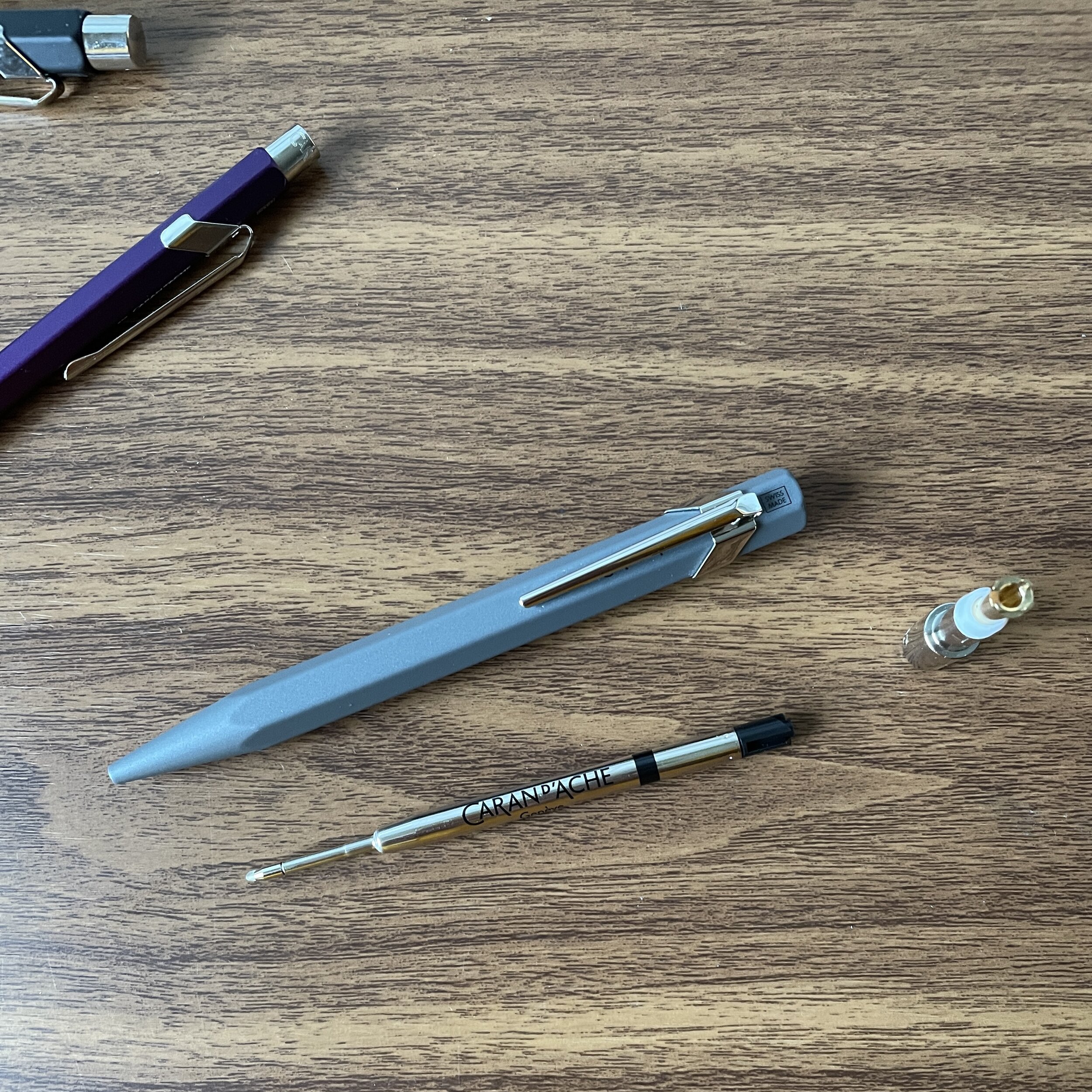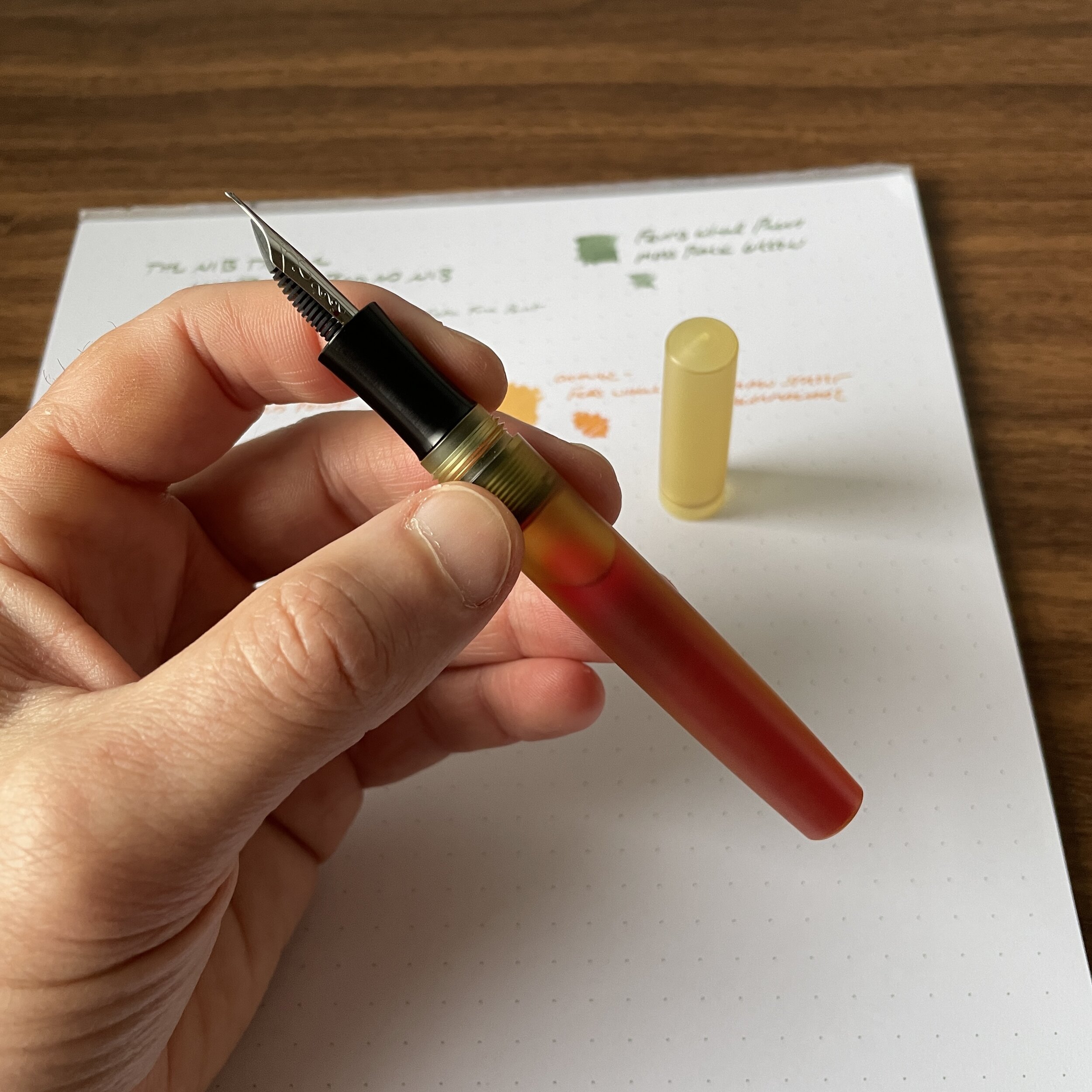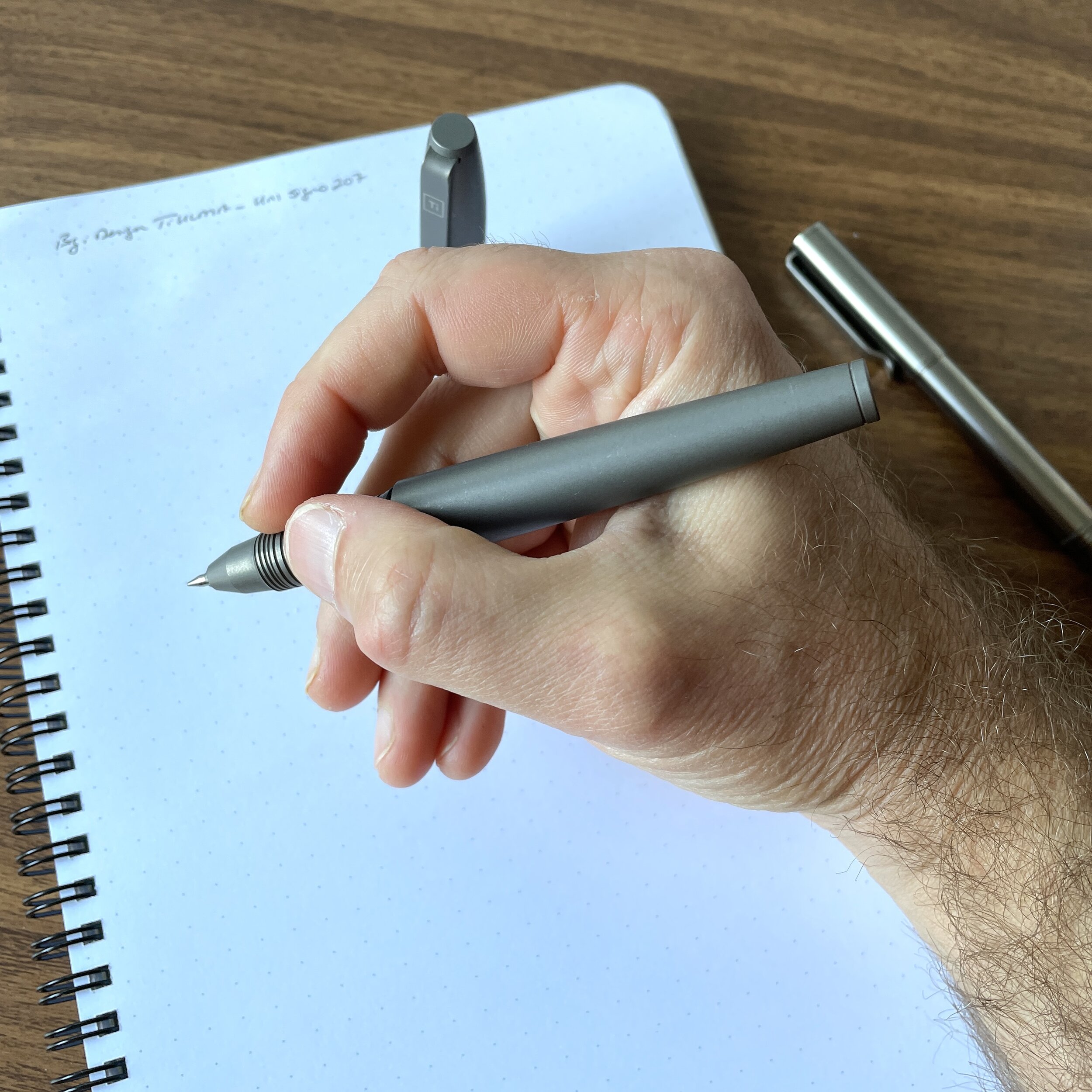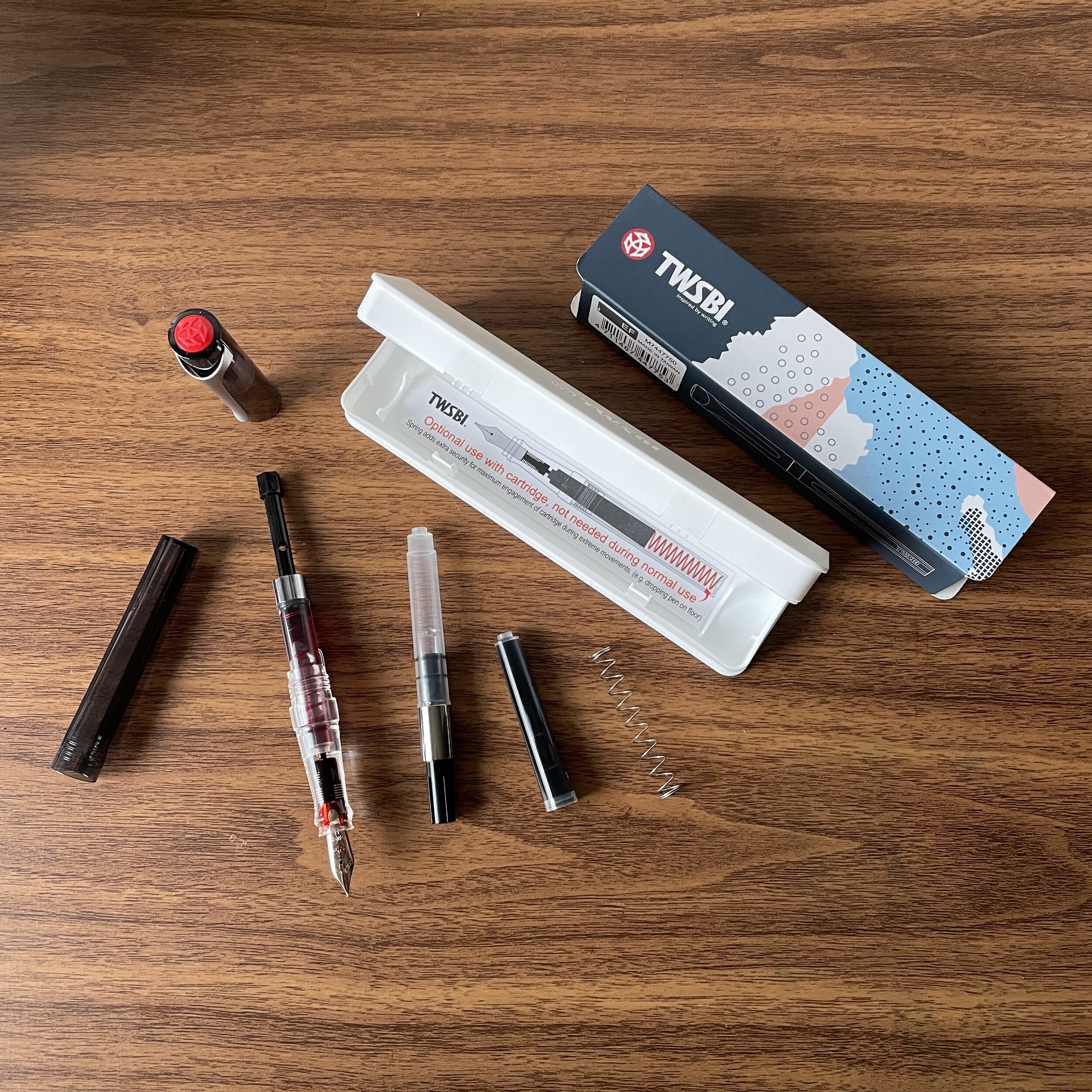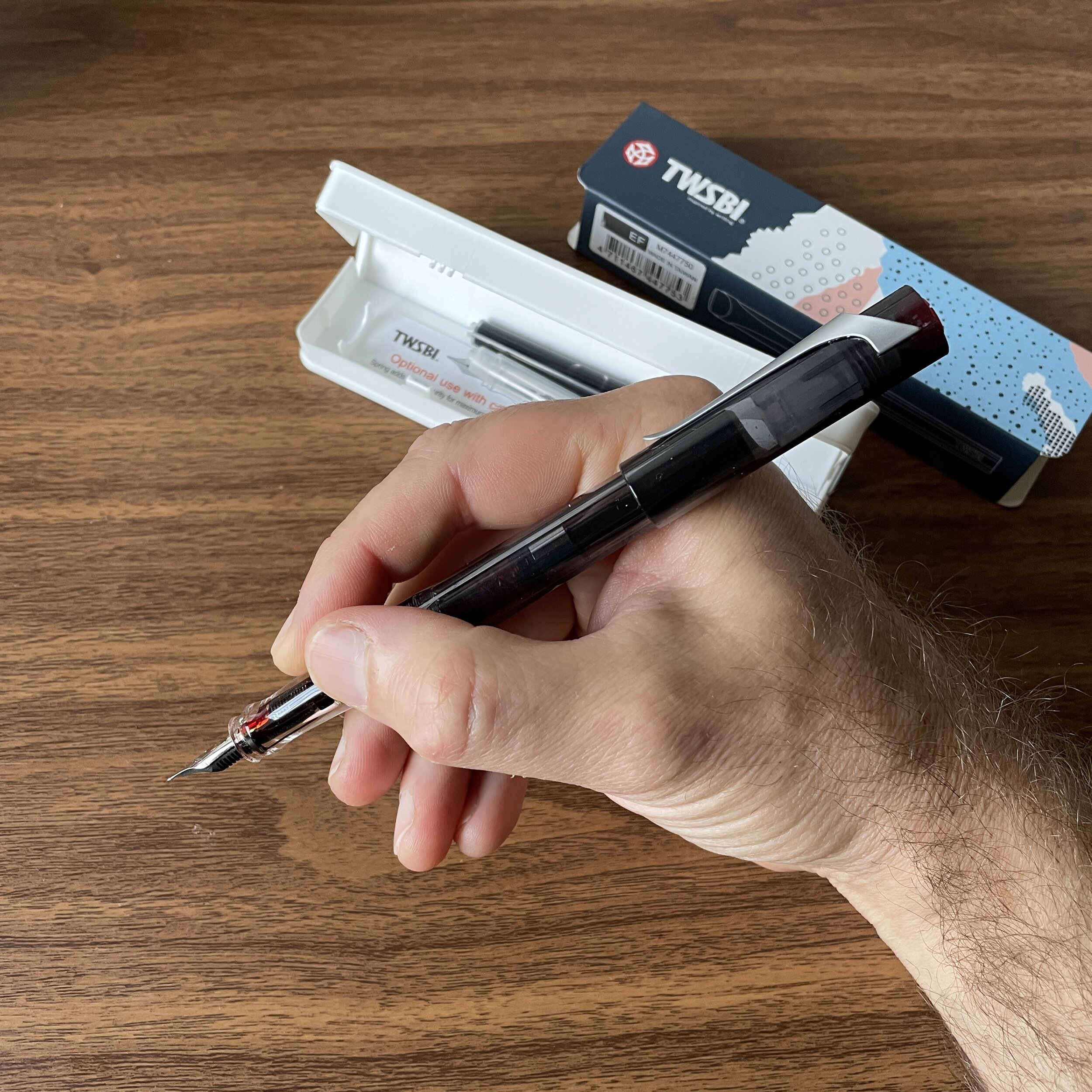Caran d’Ache’s latest release has started to gain more traction than expected, as reviewers have reacted positively to the (much) larger design and pen enthusiasts also embrace it. The curious part to me, however, is that while Caran d’Ache released this pen as what they called the “849 Rollerball,” some retailers are actively promoting this pen as the “XL Ballpoint.” The reason is simple enough: the pen takes a Parker-style refill, and there are enough gel, ballpoint, and rollerball options out there to place the 849 Rollerball in the same ballpark as versatile workhorses like the Retro 51 Tornado and Baron Fig Squire, both of which also accept ballpoint and gel Parker-style refills. Today I’ll take a closer look and talk a bit about why the 849 Rollerball has become one of my most-used everyday writers over the past few weeks.
Comparison to the Classic 849 Ballpoint
The first thing I wanted to know when Caran d’Ache first announced the 849 Rollerball was how the pen compared size-wise to the standard 849 ballpoint pen, a favorite of mine that serves as my go-to “click pen” probably 80% of the time. The Caran d’Ache 849 serves as the company’s flagship writing instrument, and is reissued every year in a wide array of special and limited edition finishes and collaborations. I have dozens of these pens, and it’s rare that you’ll find me without one clipped to my shirt pocket or in the pen slot of my notebook or planner.
Caran d’Ache says the 849n Rollerball is 28% larger than the 849 ballpoint. I had it pegged at closer to 50. Astoundingly, I didn’t notice much increased weight since the pen remains very well balanced.
So why mess with a formula that’s worked for decades? The downside to the standard Caran d’Ache 849 ballpoint is that while it works exceptionally well as a portable “jotter” pen - perfect for taking quick notes, writing checks, signing things, etc., it’s relatively slim and some might find it uncomfortable for longer writing sessions. The Caran d’Ache 849 rollerball maintains the hexagonal barrel shape - which I find comfortable - but is 28% larger without adding much weight. If I’m looking to take 2 hours worth of notes in a meeting, or spend a half-day marking up documents, I will take the 849 Rollerball option. If it can be done without adding too much weight and throwing off the balance of the pen, I find a larger barrel much more ergonomic.
I enjoy hexagonal barrels, especially where, as here, they aren’t too sharp.
The second reason is the refill. While I personally enjoy the proprietary Caran d’Ache “Goliath” ballpoint refill that ships standard in the 849 ballpoint, and Caran d’Ache is finally releasing the Goliath in more colors and tip sizes, you’re pretty much stuck with it as your only option unless you want to hack other refills and/or purchase a custom adapter from a third party. (I understand some people have had luck with certain brands of Parker-style refills in the 849 ballpoint. I have not. All of the Parker-style options I have tried are too long.)
The refill is very easy to swap out. You simply unscrew the knock and drop in the new cartridge.
The 849 Rollerball, on the other hand, is designed around a Caran d’Ache Parker-style rollerball cartridge, which in and of itself is a very nice writer that I could use regularly. It bleeds much less than the Schmidt refills that ship standard with the Retro 51 Tornado and the Baron Fig Squire, and I would definitely consider substituting this refill if you find the Schmidt too wet. That said, for daily use, I immediately swapped in the Uni Jetstream SXR-600 in .5mm, one of my favorite Parker-style options that also lives in several of my Baron Fig Squires. This hybrid ballpoint-gel refill has a fine tip that allows me to write small, dries quickly and has performed flawlessly in pretty much any pen I’ve tried.
Nothing too exciting here in the writing sample department (black rollerball refills, and all). Paper shown here is the Write Notepads Engineer’s Notebook, which also comes in pad form.
Takeaways and Where to Buy
Caran d’Ache has done a nice job of updating the 849 lineup over the past several years, building on its history and maintaining the classic “hex pencil” barrel shape while also adapting to the needs of new formats. For example, the 849 fountain pen includes a cap and a rounded section, yet it doesn’t take away from the inherent “849-ness” of the pen. Similarly, they made the rollerball larger to better adapt it to longer writing sessions - something rollerball users tend to appreciate more, in my experience - though again the pen still feels like a Caran d’Ache 849.
From left, the Caran d’Ache 849 Ballpoint, the Caran d’Ache 849 Rollerball, and the Retro 51 Tornado.
I also think Caran d’Ache nailed the price point on this pen. At just under $50 at most retailers, the 849 Rollerball is competitive with the Retro 51 Tornado and the Baron Fig Squire, its two primary “competitors.” (I would put “competitors” in quotations because these are all very different pens, and you can’t go wrong with any one option. It just depends on which shape and/or aesthetic you prefer.)
Available colors, from left: matte grey, white, matte black, red, and blue.
Most Caran d’Ache retailers are stocking the 849 Rollerball, including our own T.G.S. Curated Shop, which has the pen priced at $48. Currently, the 849 Rollerball is available in five colors: a matte grey, a matte black, red, blue, and white. My personal favorite at the moment is the matte grey, which I selected for my own personal pen, with the white version a close second. All of the options look great, however, and I can’t wait to see whether Caran d’Ache introduced additional colors, or even makes the 849 Rollerball available for collaborations.
The T.G.S. Curated Shop is an authorized retailer of all brands we carry. By shopping with us, you are supporting original content, pen reviews, pen show events, etc. from The Gentleman Stationer. If you would like to support us even further, please consider checking out the T.G.S. Patreon Program, which offers access to online meetups, exclusive discounts and pre-orders, and more!
